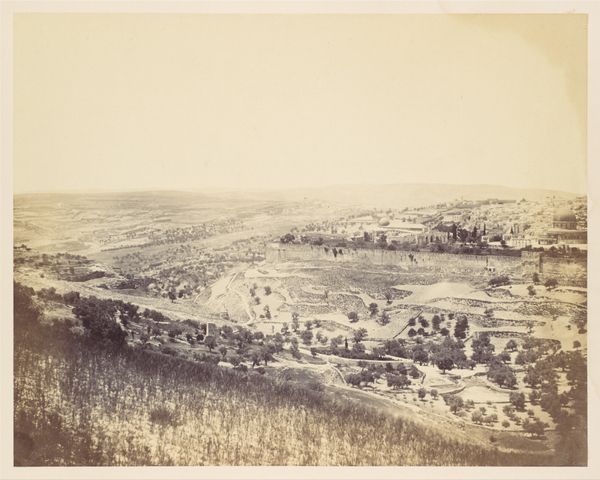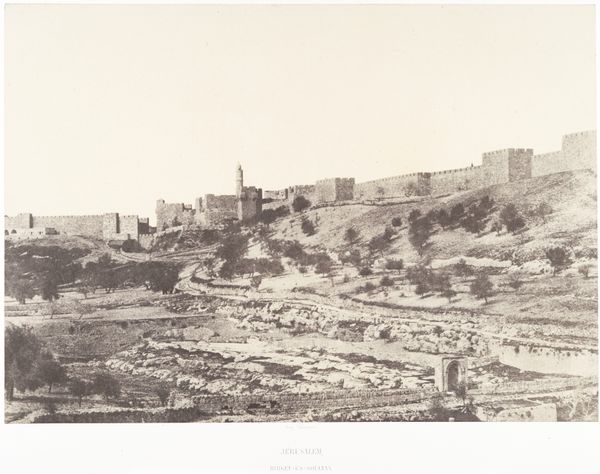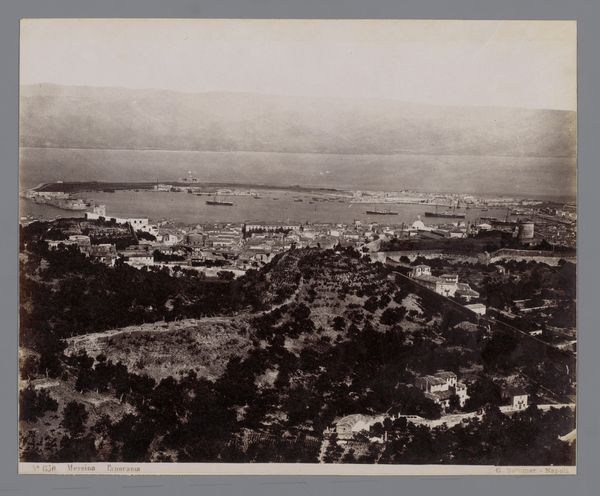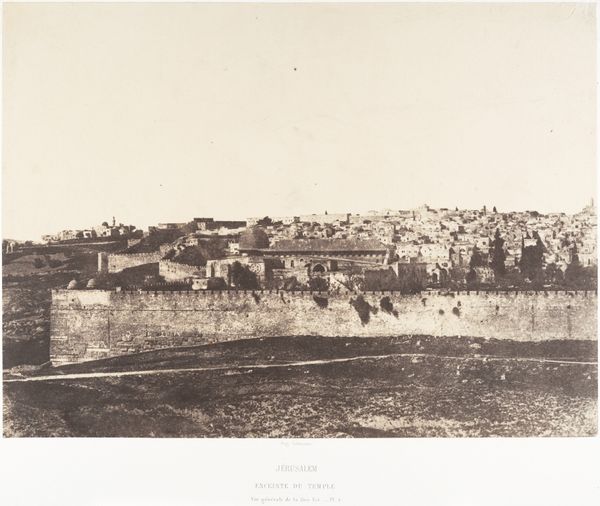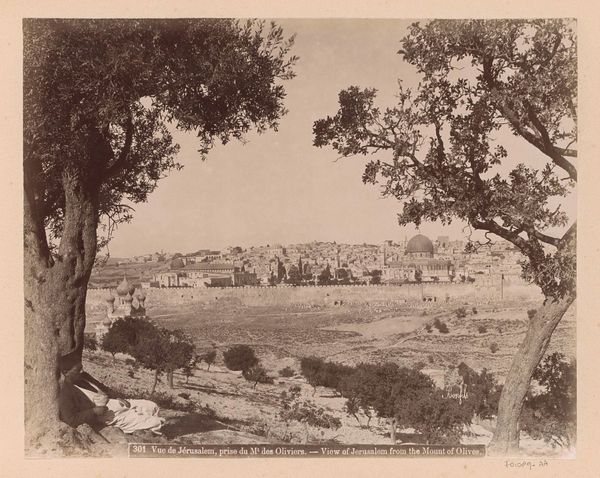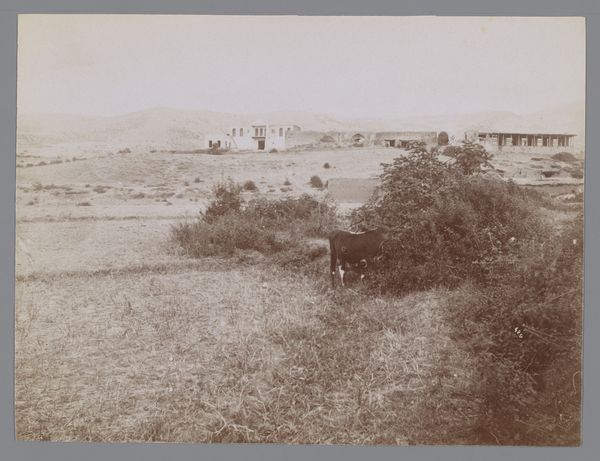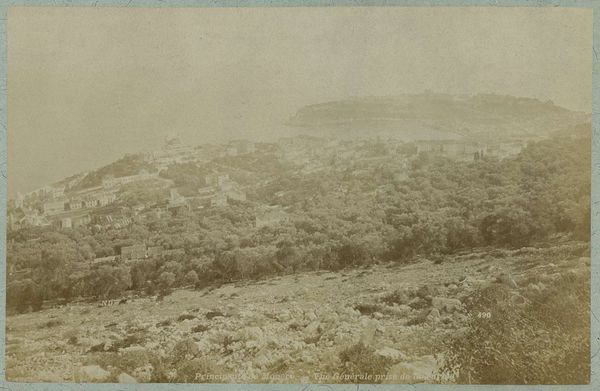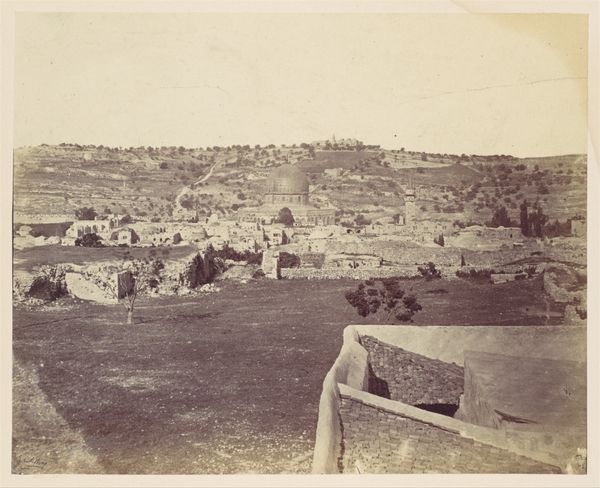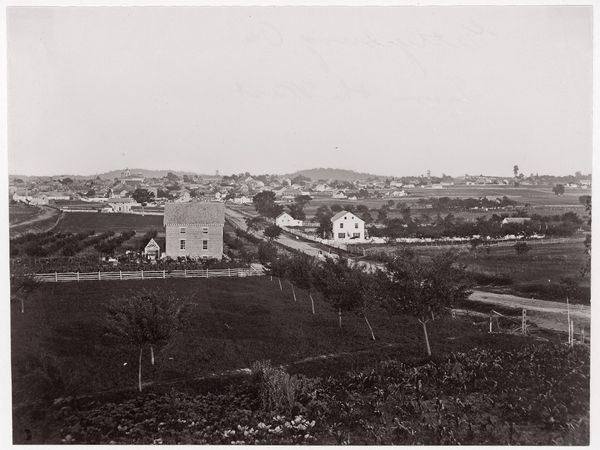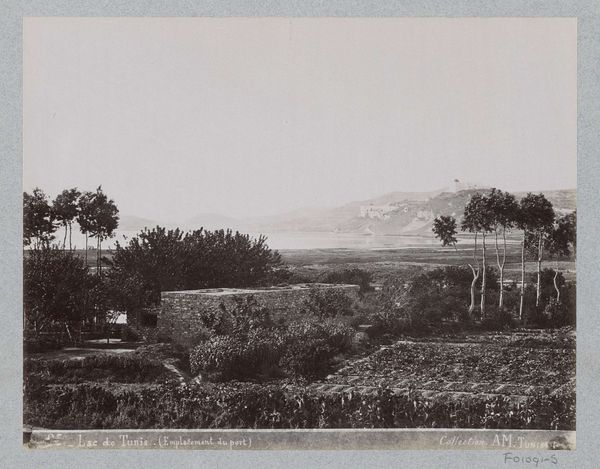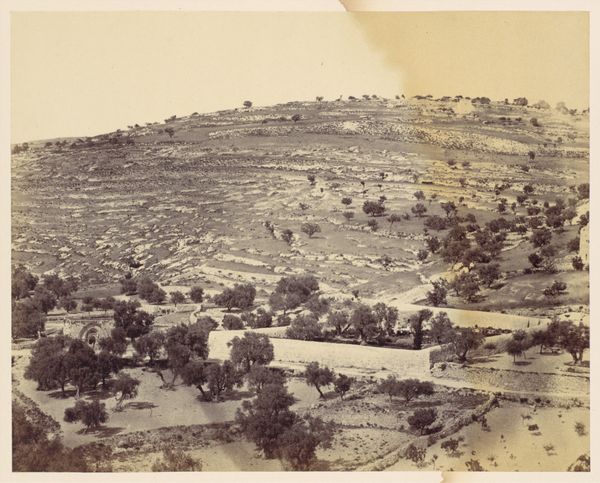
#
outdoor environmental image
#
photo restoration
#
natural tone
#
countryside
#
outdoor photography
#
outdoor scenery
#
monochrome photography
#
outdoor activity
#
watercolor
#
shadow overcast
Dimensions: height 82 mm, width 109 mm
Copyright: Rijks Museum: Open Domain
Curator: This photograph, titled "Gezicht op een protestants kerkhof in Jeruzalem," captures a view of a Protestant cemetery in Jerusalem, dating back to 1898 and created by Johannes Lodewijk Heldring. Editor: My first impression is of a hushed solemnity. The monochrome tones and overcast sky give it a sense of quiet reflection, of a past that’s both distant and present. Curator: It’s interesting you mention the past being both distant and present. This photo was taken during a period of increased European interest and colonial presence in the region, particularly concerning religious sites. The choice of a Protestant cemetery as a subject, at this specific moment in history, speaks volumes about the evolving socio-political landscape. Editor: Absolutely. The cemetery itself is a potent symbol. Cemeteries are, after all, designed as symbols— physical representations of collective memory. Focusing on a Protestant burial ground suggests a deliberate emphasis on a specific cultural and religious presence within a land often viewed through different religious narratives. Do you see it staking a claim to cultural legitimacy? Curator: Indeed. This image can be interpreted as a visual assertion of Protestant heritage in Jerusalem. It subtly places this community within the historical narrative of the city, emphasizing their presence alongside other, more dominant religious groups. The location of such graveyards was also a symbolic matter tied to spatial control. Editor: It's so much more than just a landscape shot; you have this weight of mortality against a backdrop of contest identity. Look how the buildings are rendered distant yet imposing against the open ground, reminding us that these resting places are both outside of and intertwined with our temporal lives. The shadows even suggest a somber hope; it speaks, perhaps, to their vision of Jerusalem’s history, built with faith during tumultuous conditions. Curator: Precisely. It highlights the intertwined relationship between faith, politics, and place, as manifested through institutions, religious practices, and even burial sites. The image prompts us to think about whose stories get told and remembered. Editor: I agree; seeing it with this wider historical perspective really deepens my understanding. I will leave this with renewed vision on what can be conveyed. Curator: Likewise. It is not just looking but questioning and relating how places help narrate shared history.
Comments
No comments
Be the first to comment and join the conversation on the ultimate creative platform.

